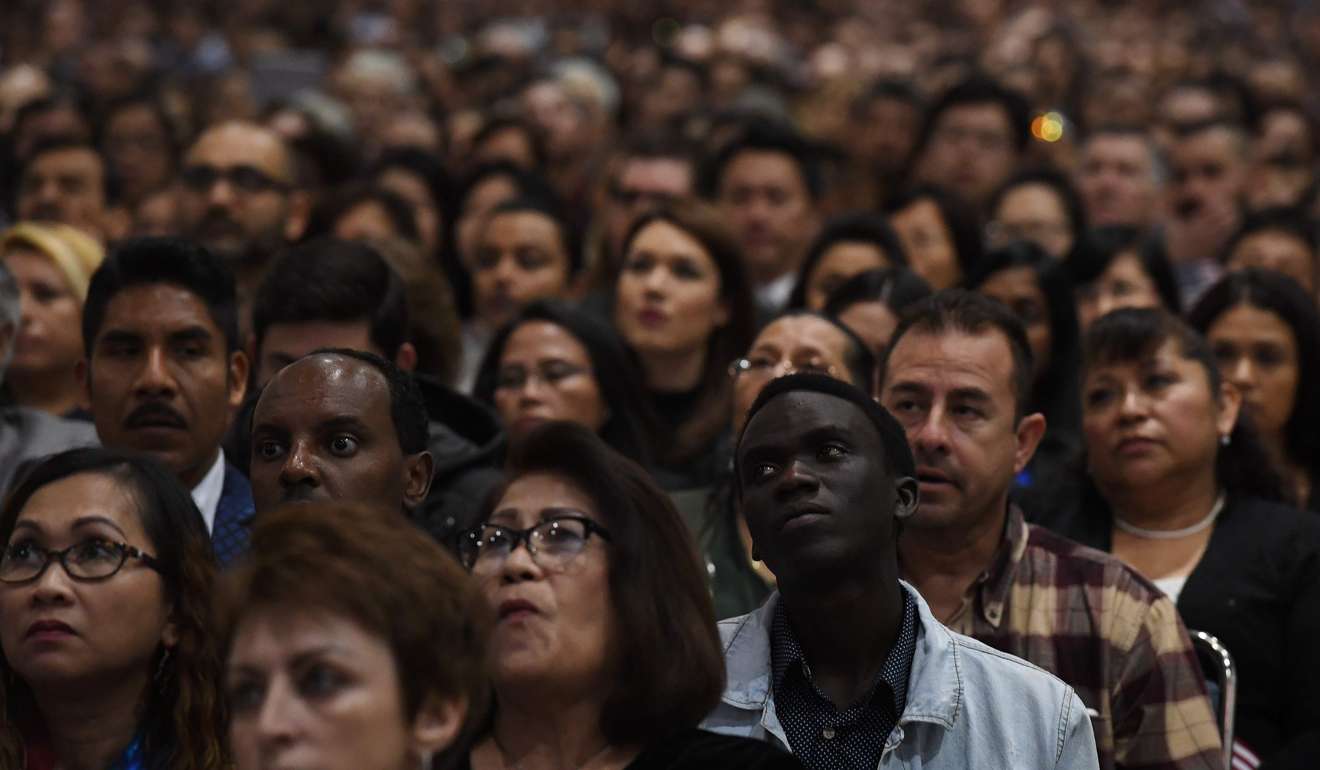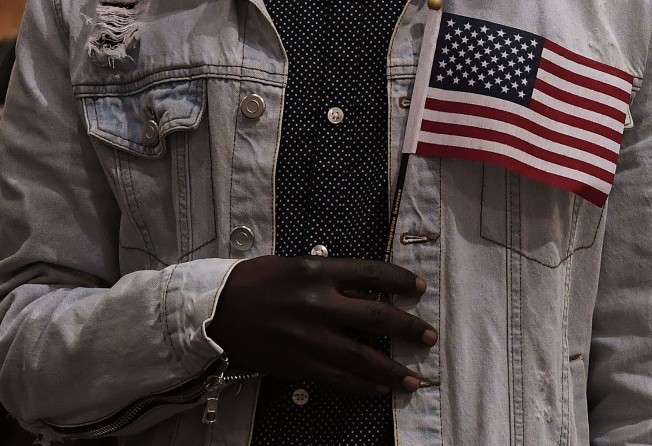
How to apply for US naturalisation, amid Trump’s immigration crackdown

Immigrant advocates say they’ve seen a huge spike in calls and questions about how people can become US citizens since President Donald Trump’s executive orders on immigration and travel.
Many of these immigrants have lived in the country for years but didn’t apply to become citizens earlier, citing a lack of time or money for the application fees.
It’s common for presidential elections and changes in the application process to spur citizenship increases.
Here’s a look at the process of becoming a citizen:

Who is eligible for US naturalisation?
Immigrants can apply to become US citizens through naturalisation, but the process is not open to everyone.
Most people must live in the US and have a green card for five years before applying. Spouses of American citizens can generally apply after three years with a green card indicating permanent residence in the country.
The estimated 11 million immigrants in the country illegally don’t have a direct path to citizenship. Nor can people here on work visas apply to become US citizens without first getting green cards and going through the requisite wait.
There is a special process for immigrants in the military. Those serving since September 11, 2001 can immediately apply for citizenship.

How do you become a US citizen?
To become a US citizen, an immigrant must file an application and pay US$725 in fees. They must have their fingerprints taken and show they have “good moral character.”
They must also pass English language and a 10-question US civics test that covers topics such as the Founding Fathers, Constitution and the presidency.
If approved for naturalisation, immigrants attend a ceremony and take an oath as new American citizens.

What’s the difference between a green card and citizenship?
With a green card, immigrants can live and work in the United States. But they still retain their country’s passport and can’t obtain most federal government jobs, vote in national elections or serve on a jury.
In addition, green card holders who are convicted of crimes can lose their legal status and be deported — not the case with US citizens.
Once immigrants naturalise, they can apply for a US passport and register to vote. It is also easier for them to bring relatives to join them here from overseas.
Nearly 1 million people applied to become US citizens the fiscal year through September 2016. Advocates say interest in naturalisation jumped again after President Trump issued executive orders that legal immigrants fear could affect their standing in the country.
Could you pass the US civics test?
Immigrants who want to become citizens must go through a long list of requirements, including passing a 10-question civics test.
Here are some sample questions:
1. What do we call the first 10 amendments to the Constitution? Answer: Bill of Rights.
2. How many amendments does the Constitution have? Answer: 27.
3. What is the name of the current president of the United States? Answer: Donald Trump.
4. If both the president and vice president can no longer serve, who becomes president? Answer: Speaker of the House.
5. How many justices serve on the Supreme Court? Answer: nine.
6. What is one power of the federal government under the Constitution? Answers: Print money; declare war; create an army; make treaties.
7. When was the Constitution written? Answer: 1787.
8. Who was the first president? Answer: George Washington.
9. Name one of the two longest rivers in the US? Answer: Mississippi or Missouri.
10. Who did the United States fight in World War II? Answer: Germany, Japan and Italy.
By the numbers
Here’s a look at naturalisation in the US based on numbers from the 2015 fiscal year, the latest year for which a detailed breakdown was available:
— About 730,000 immigrants naturalised to become US citizens during the 2015 fiscal year.
— About 106,000 of these immigrants came from Mexico, 42,000 from India and 40,000 from the Philippines.
— One in five of the newly naturalised citizens lived in the state of California. About 12 per cent lived in New York and 11 per cent in Florida.
— More than half were between 25 and 44 years old. About 9 per cent were 65 and older.
— Typically, immigrants had their green cards for 7 years before they became US citizens.
Source: U.S. Department of Homeland Security